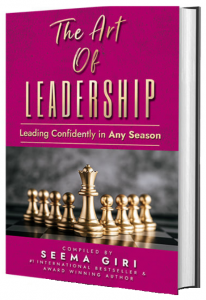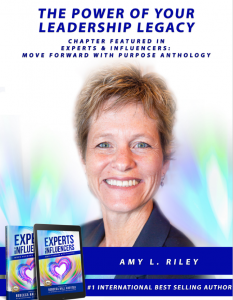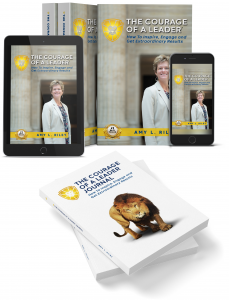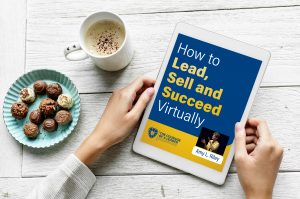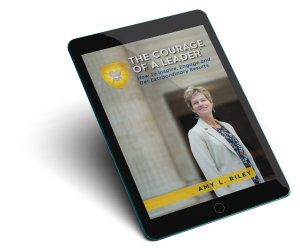Today, on The Courage of a Leader podcast, you can be inspired and impressed by Eric Larson, Tilia Holdings Co-Founder, Co-CEO, and Chairman.
Eric’s mission is to transform the effectiveness and efficiencies in the food supply industry, focusing on food safety, nutrition, and wellness, and sustainability. No small task!!
Listen in to discover the innovative ways he’s approaching his commitment and take away lessons that can benefit you and all leaders.
About the Guest:
Eric Larson, Tilia’s Chairman, Co-Founder and Co-CEO, started his career as a private equity investor and business builder in 1986. Prior to co-founding Tilia in 2017, Eric established Linden Life Science in 2002, now known as Linden Capital Partners, a leading healthcare focused middle-market private equity firm. Eric was Linden’s Chairman and, as its senior investment professional, developed the firm’s strategy and organization.
Before Linden, Eric was Executive Vice President and Managing General Partner of First Chicago Equity Capital (now One Equity Partners), which he co-founded in 1991. He began his private equity career at First Chicago Venture Capital (now Madison Dearborn Partners), where he was a Partner and Investment Principal.
In addition to Tilia, Eric is involved with several technically-oriented organizations, including: the Harvard T.H. Chan School of Public Health (Member of the Nutrition Roundtable); the National Geographic Society; the Illinois Institute of Technology (Trustee and Chairman of its Institute of Design); Center for Higher Ambition Leadership (Executive Fellow); and the Commercial Club of Chicago (member).
About the Host:
Amy L. Riley is an internationally renowned speaker, author and consultant. She has over 2 decades of experience developing leaders at all levels. Her clients include Cisco Systems, Deloitte and Barclays.
As a trusted leadership coach and consultant, Amy has worked with hundreds of leaders one-on-one, and thousands more as part of a group, to fully step into their leadership, create amazing teams and achieve extraordinary results.
Amy’s most popular keynote speeches are:
- The Courage of a Leader: The Power of a Leadership Legacy
- The Courage of a Leader: Create a Competitive Advantage with Sustainable, Results-Producing Cross-System Collaboration
- The Courage of a Leader: Accelerate Trust with Your Team, Customers and Community
- The Courage of a Leader: How to Build a Happy and Successful Hybrid Team
Her new book is a #1 international best-seller and is entitled, The Courage of a Leader: How to Inspire, Engage and Get Extraordinary Results.
https://www.linkedin.com/in/amyshoopriley/
Link mentioned in the podcast
The Inspire Your Team assessment (the courage assessment): https://courageofaleader.com/inspireyourteam/
Thanks for listening!
Thanks so much for listening to The Courage of a Leader podcast! If you got inspired and/or got valuable leadership techniques you can use from this episode and think that others could benefit from listening, please share using the social media buttons on this page.
Do you have questions or feedback about this episode? Leave a comment in the section below!
Subscribe to the podcast
If you would like to get automatic updates of new The Courage of a Leader podcast episodes, you can subscribe to the podcast on Apple Podcasts. You can also subscribe in your favorite podcast app.
Leave us an Apple Podcasts review
Ratings and reviews from our listeners are extremely valuable to us and greatly appreciated. They help our podcast rank higher on Apple Podcasts, which helps us ignite The Courage of a Leader in more leaders! Please take a minute and leave an honest review on Apple Podcasts.
Teaser for next episode
Tune in next to discover the S.E.E.R. Secrets for DE&I Systemic Change from Natasha Miller William’s popular TEDx.
Transcript
Today on the Courage of a Leader podcast, you can be inspired and impressed by Eric Larson, Tilia Holdings Co Founder, co CEO and chairman. Eric's mission is to transform the effectiveness and efficiencies in the food supply industry, focusing on food safety, nutrition and wellness and sustainability. I'm glad you're here to listen in to discover the innovative ways he's approaching his commitment. And I know you'll walk away with some important insights.
Amy Riley:Welcome to the Courage of a Leader podcast. This is where you hear real life stories of top leaders achieving extraordinary results. And you get practical advice and techniques, you can immediately apply for your own success. This is where you will get inspired. And take bold, courageous action. I'm so glad you can join us. I'm your host, Amy Riley. Now, are you ready to step into the full power of your leadership and achieve the results you care about most? Let's ignite the courage of a leader.
Amy Riley:Eric, I'm excited to have you with me on the Courage of a Leader podcast today. And I'm excited about the topic we've decided to discuss. So thank you for being here.
Eric Larson:Thank you. It's great to be here.
Amy Riley:Yeah. So I talk in my programs I describe in my book, a concept called a leadership legacy. And I know that you can relate to this, Eric, a leadership legacy is the bigger picture purpose to our leadership, we bring it to all areas of our life. We bring it to different organizations, different projects, different relationships. It's what can call us forward. And I know that you are living your leadership legacy, you are clear about your purpose. And when you look at the different skill sets, and the different experiences that you had, and how you're bringing them all together today, it tells a powerful story. Can you tell us the high level version of that story? How did you discover your purpose? And what is it?
Eric Larson:Well, I had a I had a kind of a coach, or I guess he was really more like a friend who unfortunately has passed away a number of years ago, much younger than age. But his name is John Briscoe. And he was the head of the water programs for the for the World Bank, all around the world. That was most of his career. And they were always very complex projects. So when I got to know him, I asked him how he how he managed these complex projects. Yeah, that he managed it with a Venn diagram. We broke everything down into small pieces that were defined. And he looked at all these projects of Venn diagrams. So I took that idea. And I'd applied it to my own career. At that point, I was midway through a career. And I I observed that my everything I had done up until then, and everything I've done since then fell into this consistent Venn diagram. Yeah, my undergraduate training was in science, so biology and biochemistry. Uh huh. And then I had a brief, but for me kind of pivotal career in architecture and design. Yeah. And then I got into into business and when I put those three bubbles together, that became my leadership process. I've started three private equity firms, and they all fall into within that Venn diagram definition science plus design, plus business or organization.
Amy Riley:Yeah. So inside of your leadership legacy, what are you bringing forth? What are you what are you working on right now?
Eric Larson:So right now, my colleagues and I run a business called Tilia Holdings. And we are focused on innovation and and processes in the food supply chain, this and connecting food to the prior firm that I ran, which is health. So food and health. And the purpose that we have developed for this is we think of food as upstream from the health care spectrum. So it has tremendous effects on what you eat, has tremendous effects on on health than you probably know these kinds of statistics. The number of people who are undernourished in the world has fallen dramatically because of success. Since in the development of the food industry, the number of people who are suffering from diabetes or prediabetes has gone up significantly because of the excess of food or other conditions that have developed. So we're focused on this connection between food and health. And we call it the three peat, we call it the three P's. Okay? So the first thing that we my partner and I have really focused on is food safety, which we think of as public health. Okay. 60 million people in the world there in the US every year suffer from some sort of foodborne illness. So having safe food supply is a public health concern. Okay. The second P we call personal health, and that is nutrition and wellness. That's how we eat that affects our health. And then the third P is planetary health, which is sustainability and waste at the food industry, which accounts for about 30 to 40% of greenhouse gases, how it can affect the sustainability of the planet. So public health, personal health, planetary health of three piece that's our mission. Got it.
Amy Riley:Public, personal and planetary, I love it. So you seem really clear about what you are about your leadership and what you are looking to accomplish in our world. No, did that become clear, right? I mean, you can look back now and you can see the Venn diagram. When did the Venn diagram first become clear? How did you see that? Well,
Eric Larson:I was before I had a Venn diagram. Okay. Early in my private equity career, I was kind of drawn to businesses that had some sort of science or technical aspect to them. Because while I don't consider myself a scientist, I know enough, and I'm married to a scientist. So I have access to technical resources that can help me have some insights into these businesses that might otherwise not be interesting to people. So in the 80s, and the 90s, I started to be interested in science based companies. And that led me directly in the early 90s, into healthcare, which is the biggest science based in history. And in our GDP, it's about 20% of American GDP. And so I got interested in health care in a time or began to focus on healthcare at a time when the Clinton administration was going through a, you know, kind of trying to re re vais up American healthcare, and it scared a lot of investors because of the disruption. That was that might happen. And I figured, if everybody's leaving, that would be a good time to get into it. I started investing in healthcare, other people were investing in it prior to that, but I really began to focus on healthcare broadly defined in the early 90s.
Amy Riley:What I want to underscore about what you just said, Eric, is that you had this interest in science, and you didn't ignore it, even though there's not formal training or edge, right? Like that's not your degree. That's not the area of your expertise. But you're like, I'm interested in that. I've got access to that. I can pull that component into what I'm doing. And also that there was interest in healthcare, there's an opportunity there. And even though it might have looked like, Oh, everybody else is leaving, right? I see something, I see something that could be pursued there. And having the courage to pursue both of those, even though that's not my formal education. And that's not what everybody else is doing right now. Which is pretty exciting. So I work with leaders to distinguish and to live into their leadership legacies. We know the arena of your leadership legacy, because when you bring science and business and design together, how do you describe that umbrella? Simply clearly, to others. Well,
Eric Larson:there when we started, Tilly? Yeah, there were a lot of other firms that were investing already, either private equity firms or corporations that were already invested in the, in the food industry or making investments in the food industry. And so we didn't want to be a meat to type firm. We wanted to do something that was differentiated. And so the the approach on food safety was really important to us, because both my partner and I had developed a very successful business food safety business that we sold to a health care company. And we realized that the smaller businesses that we invest in who are selling services or products are in good radiants to some of the biggest consumer products, companies in the country and in the world, or nationally, or Mars, or Kellogg or didn't own any of those companies to be involved with one of our vendors, they have to be assured that our work is going to have good food safety practices. And so we began with that and that's that has become sort of the first leg of differentiation for us that can't be wanted to be different from what other people were doing in the in the in the food supply chain, we developed this notion that we would work in this very complex, long and kind of hidden middle of the supply chain. So from where food is grown to where it's consumed, is a complex global, inefficient, changing disrupting supply chain. And now he also was focused exclusively on that so we have up the tagline that you know, this this this term farm to table or farm to fork, yet we wanted to be the 'To' so anything food along the supply chain, and help that ultimately it get to the consumer products, companies and their consumers. You
Amy Riley:estor and business builder in:Eric Larson:Well, that's a great introduction. And that was listening to that. It really does point out how these organizations that I was involved in long ago have changed over time, that's really the dynamic in our industry is you have to embrace that kind of change.
Amy Riley:Yes. And that brings up the question for me, you have a purpose, you have something that you are trying to create and dynamics are changing in the industries in the landscape in all the parts of the to, in Farm to Fork, right? How do you? How do you make sure that you are boldly living into your purpose that you stay committed to what you want to stay committed to, as things move and shift? I
Eric Larson:think of us as we're capitalists, so we're investing various different types of capital in the private equity. It's obvious that one of the forms of capitalist financial capital that we manage, we're fiduciaries we manage the capital that other investors have entrusted to us. But that's only one of the four types of capital that we think we're responsible for. And in alphabetic order, that would be the second one financial capital. And the first is brand capital. And as I mentioned earlier, our portfolio companies are working on behalf of the biggest consumer packaged goods or CPG companies in the world. And so we're helping to manage their brands. And so our customers brands are important to us and we look at customer satisfaction as one of the metrics of success. So brand capital, then financial capital for on behalf of our investors, that's what a good a good investor return looks like. We can measure that from start to finish of our ownership period. The third cap type of capital that we're managing is human capital. And that's the employees who work in the businesses that were involved with. And I'm, throughout my career, I've been struck by this rather bleak survey that Gallup does every year that shows that two thirds of employees are dissatisfied with their jobs. So I feel if there's a role that we can play in improving the employee engagement and employee satisfaction during the time that we own these businesses, that's capital that is well managed. And then the last form is what we call social capital. That is the engagement of our companies in the communities that they're involved in whether they are working with a local food bank, donating some of their food, other kinds of volunteer work, that is up to them. But we think of all four of those types of capital as what are our portfolio companies are responsible for? Nice. I was
Amy Riley:excited in one of our last conversations, Eric, about how you look across the different companies in your portfolio, and you find ways to create synergies, the economies of scale collaboration, can you tell us about how you how you do that how you look at the landscape inside of your portfolio?
Eric Larson:Well, this is what's been really interesting about the strategy that Tilia is involved with, compared to the 30 plus years of portfolio companies before that. Tilia companies hang together as part of a supply chain. So we have, we have food safety testing, a food safety testing business, we have a cold storage and logistics business, we have several different types of ingredients, contract manufacturing, packaging, other kinds of alternative processing and services, they have many of the same end customers, as well, yeah, we treat them in some respects, as if we're the owner of a holding company that has these different divisions, and we can help with their customer relationships, we can help with their employee, recruiting and benefits. Many of these things other private equity firms do as well. But the thing that hangs together for the utility portfolio companies is they have the same set of end customers. Yeah, that makes it very exciting for them to engage with one another. We'd like nothing more than to have the CEOs of our portfolio companies talking about their next assignment, the next meeting that we're going to have with one of the big CPGs, we liked the the heads of HR to be talking to each other about the employee practices and the challenges they have. We liked the Chief Commercial officers to be discussing innovations in opportunities that are coming to the marketplace. In the last several years, we realized that many of these companies are made at big companies, the biggest fool CPGs in the in the country in the world are coming to our little companies asking for help with innovation in the supply chain. So it's interesting, their resources are so large, but the they're looking to our companies to help for innovations and ideas that can make their supply chain more efficient. So this year, we launched a, an organization that we call with intelli that we call the Tilia Innovation Collaboratory. Yeah, this is exciting. With the help of an innovation scientist, we created a framework of innovation just for Tilia. And then we made up this word collaboratory, which is really focuses on the natural collaboration that happens in the food supply chain. And the fact that each one of our that's collaboration, and that began of our portfolio companies can act like a laboratory or a pilot project for improving things in the supply chain. So we put all that together, we hired a an org, a woman to run this organization for us. And we are launching these innovation projects at each one of our portfolio companies. Our upcoming board meeting, which is around strategy and our value creation plans. The first round of these innovation, intense work from each one portfolio companies will be presented at the Boardman's who were very excited about this.
Amy Riley:I love this. I'm excited about it, too, Eric, you know, I'm I'm a fan of efficiency and effectiveness. Right. And I think that this is really a neat opportunity. You have a diverse portfolio, but it's diversification inside of a single supply chain. So like you said, everybody has the same customer. So enables you to bring everybody together to innovate for the same purpose. And I'm realizing as you were talking, like, how many distinct organizations don't do this right? So you've got all the functions inside of an organization, you like kind of translating this for all of you leaders out there, inside of whatever company you're inside of. You've got different departments and functions inside of your organization, you're all serving the same customer. And we miss opportunities to collaborate and to discuss, right? Why isn't the head of operations in this division talking to the head of operations in this division, and sharing ideas? Many organizations get some centers of excellence going. And I think often we're missing, we're missing the mark. Right, and having that collaboration, even inside of our own organization, let alone what you're trying to do with the Tilia innovation, Collaboratory. Innovate across companies. What do you think has that working when even so many single companies can struggle with that?
Eric Larson:I don't know. yet. We haven't seen the result of it. So we don't know what will work and what will just sound like good ideas and what what will be the equivalent of dry holes that we're drilling has the the ability to engage the customers in talking about things that are really troubling for them that they need to fix that it's it's a way to tighten the relationship with the customers who are looking for this kind of help. And I tie it back to the experience that we had 25 years ago in healthcare, where big companies were merging, and that out of those expensive merger decisions came some cost rationalization where they outsource some services that they used to do internally. And that created a tremendous first time kind of a new wave of, of investment opportunities for private equity, the food industry is going through the same thing. There's a set of outsource technical mission critical services that our companies can provide to the biggest consumer packaged goods companies. Today, and we will know, we will know that it's working when we come up with new ways of solving their problems, the things that that are, I don't know if it makes them stay awake at night, but it's maybe making things a little bit less efficient.
Amy Riley:Yeah, so to translate this for all leaders out there looking at how can you collaborate in new ways, with other functions inside of your organization with other organizations? I, I'm working with an innovation leader right now in side of a beauty company. Right. And they are creating all kinds of new partnerships out in the organization. So no longer do we just need to know what's going on inside of our firms. What's going on outside of our firms, what are entities, academics, universities, other companies that we can partner with? And what are the what are the problems you most want to fix? Right? And I'm thinking like, bring a lab to your group. Right? What are what are you experimenting with? So you have found Eric, a very, it's a niche I'm excited about. And I'm glad that you until you are playing in this supply chain arena. What advice would you give for leaders who want to understand their Mitch, right? They want to arrive at this place, clearly understand who they are, and what they're contributing to their company or to our world?
Eric Larson:Well, to draw a little bit from your, from the book that you've written and other books like this, which by the way, I really appreciate the courage of a leader. Yeah, I think it really begins with understanding the purpose. And I think of Simon Sinek's book, Start With Why. He observed that companies that kind of fall off the the track are the ones that lose sight of the of the purpose or the why? And that takes a little bit of time. But I would say from our experience, many of the companies that we invest in have very good margins. They've got very good customer relationships, but they never they have never taken the time to really explore what is the purpose? What is what is the mission that They alone are trying to achieve? And how are they differentiating themselves in a market? Those are all things that companies like Boston Consulting Group and Bain and McKinsey and other firms like that can help what but ultimately, it comes back to the leader to be able to develop that clarity of purpose, to create the narrative around it, and then say it over and over and over both internally and externally.
Amy Riley:Yeah. And I would say no matter where, leader listener, you are positioned within your organization, what's the purpose for your sphere of influence? Right? If you're an executive, what's the what's the purpose for the overall enterprise? If you're a leader with a team of two, I, what is the purpose for your group? And how are you enabling a bigger picture? Purpose? And then staying committed to that? Why is that so important, Eric, to know our why.
Eric Larson:It's what holds the organization together. It's the gravity that brings everybody together. When I went to business school, I had no business background whatsoever. And I thought it was all about finance. I thought, then that they just thought it was all about finance. And when I got out of business school, my finance got me into the private equity world. But what I have learned about the successful organizations that I've been involved with, and maybe the I've learned the counter lesson from the unsuccessful ones is that they have the successful ones have two things in common. One is they've got a very clear sense of purpose. And two, they have built an organization around around that sense of purpose. And the skill that I didn't learn in business school, that would have been really useful was the skill of narrative storytelling, communicating that's the leaders responsibility, ultimately, to come up with that, that clarity of purpose to develop a narrative around it, and then tell that story over and over again, I did a strategy with Boston Consulting groups, that Consulting Group in the 90s. And the project manager said to me, you will know your strategy has taken root. When you overhear a conversation in the hallway, where people are using the same word you use, and you are not part of that conversation, then, you know, you've repeated enough times for it to have taken hold. Yeah, that's a possibility. Yes,
Amy Riley:it lives beyond the conversations that you're personally a part of. Really great. Eric, I want to underscore a few things. You just said, a purpose is important. I love your word, gravity. Ai creates that gravity that groundedness. I mean, we're talking about the industries that you have worked in, and there are shifting dynamics and things changing all the time. And that purpose provides that gravity, what are we up to inside of this space, so that our purpose doesn't scope or change or go off on on tangents we're clear about what that is. And we use it for decision making, right? So you build the organization around it, you use it as guidance for all decisions, and the importance of being able to have the narrative, being able to share out with different kinds of audiences about who you are and what you're up to, and why. Thank you, Eric, for joining me on the courage of a leader podcast as so much good tactical advice. And thank you for the work that you are doing in our world. Thank
Eric Larson:you for having me. This has been really fun to talk with you about what they do, Eric.
Amy Riley:Thank you for listening to the Courage of a Leader podcast. If you'd like to further explore this episode's topic, please reach out to me through the Courage of a Leader website at www.courageofaleader.com. I'd love to hear from you. Please take the time to leave a review on iTunes. That helps us expand our reach and get more people fully stepping into their leadership potential. Until next time, be bold and be brave because you've got the Courage of a Leader.


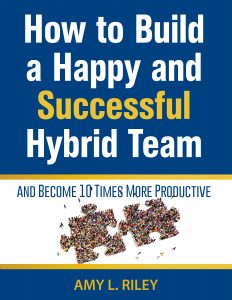
 A Summary of The Courage of a Leader® 4 Pillars
A Summary of The Courage of a Leader® 4 Pillars